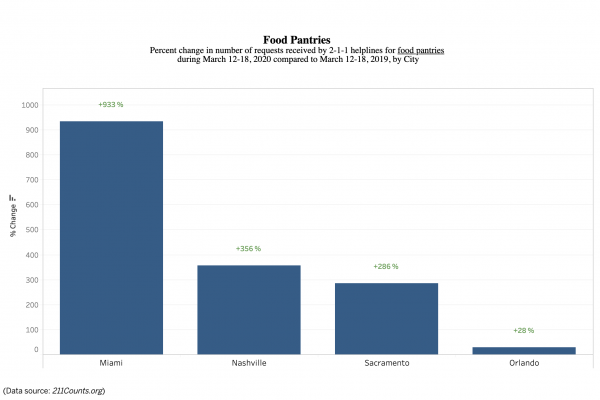There have been more than 3.5 million requests for assistance to 2-1-1 help lines around the United States since the coronavirus pandemic hit this spring. The impact was immediate and dramatic, said a Brown School researcher who tracks calls to 2-1-1 help lines across the U.S.

During COVID-19, the volume of requests to 2-1-1s has increased exponentially, said Matthew Kreuter, the Kahn Family Professor of Public Health at Washington University in St. Louis.
“Questions about COVID-19 symptoms and testing account for part of this increase, but mostly people need help dealing with the economic consequences of the pandemic,” said Kreuter, senior scientist at the university’s Health Communication Research Laboratory. The lab developed 2-1-1 Counts, the first tool to provide real-time, searchable and visual presentations of data from 2-1-1 call centers across the country.
2-1-1 is a free and confidential service that helps people across North America find the local resources they need 24 hours a day, seven days a week, in most communities. Each year, 2-1-1s receive 16 million requests, not only seeking emergency services, but also basic needs such as food, shelter and clothing.
The World Health Organization declared COVID-19 a pandemic on March 11. “In the first two full weeks afterward (March 16–29), food-related requests to 2-1-1s skyrocketed, increasing 486%,” Kreuter said in a recent Health Affairs blog post.
“Requests for rent assistance were up 137%, and, across all need categories, daily requests more than doubled compared to pre-COVID-19 rates in 2020,” he said. “The overall rate of increase is even more striking given that requests to 2-1-1 for help with some other social needs declined sharply as a direct result of COVID-19.
“The potential applications of 2-1-1’s social and economic needs data are many,” Kreuter and his co-authors wrote in the blog post. “For a social service safety-net system that is stretched thin in the best of times, COVID-19 presents a daunting challenge and a renewed sense of urgency for investment and improvement. When requests to 2-1-1 double, that means referrals to community-based agencies double as well. Understanding which needs are rising and falling in which neighborhoods should inform community priorities and resource allocation to better and more efficiently meet demand.”
Data tracked by 2-1-1 Counts can be searched and displayed by date, county, congressional district and more.
Kreuter’s team has established a web page, FOCUS-19, to report new findings daily.


